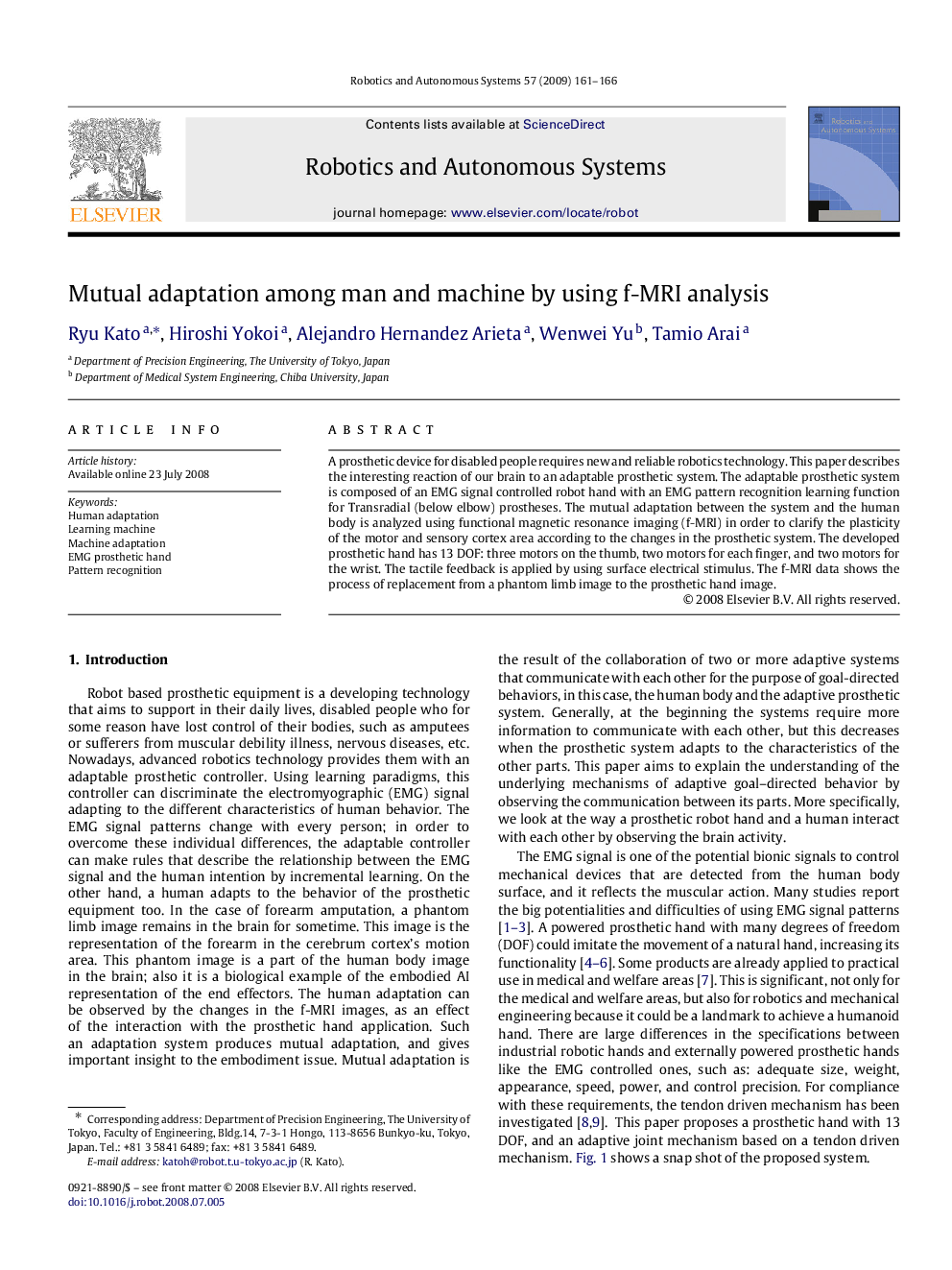| Article ID | Journal | Published Year | Pages | File Type |
|---|---|---|---|---|
| 413518 | Robotics and Autonomous Systems | 2009 | 6 Pages |
A prosthetic device for disabled people requires new and reliable robotics technology. This paper describes the interesting reaction of our brain to an adaptable prosthetic system. The adaptable prosthetic system is composed of an EMG signal controlled robot hand with an EMG pattern recognition learning function for Transradial (below elbow) prostheses. The mutual adaptation between the system and the human body is analyzed using functional magnetic resonance imaging (f-MRI) in order to clarify the plasticity of the motor and sensory cortex area according to the changes in the prosthetic system. The developed prosthetic hand has 13 DOF: three motors on the thumb, two motors for each finger, and two motors for the wrist. The tactile feedback is applied by using surface electrical stimulus. The f-MRI data shows the process of replacement from a phantom limb image to the prosthetic hand image.
